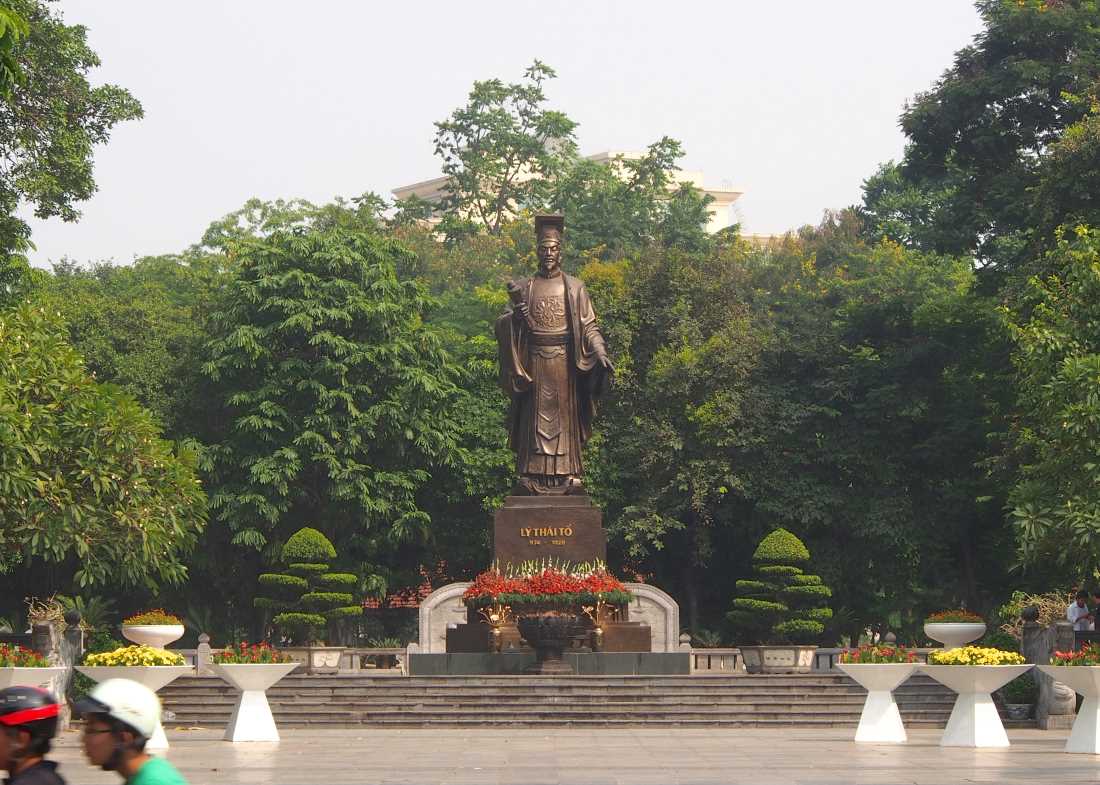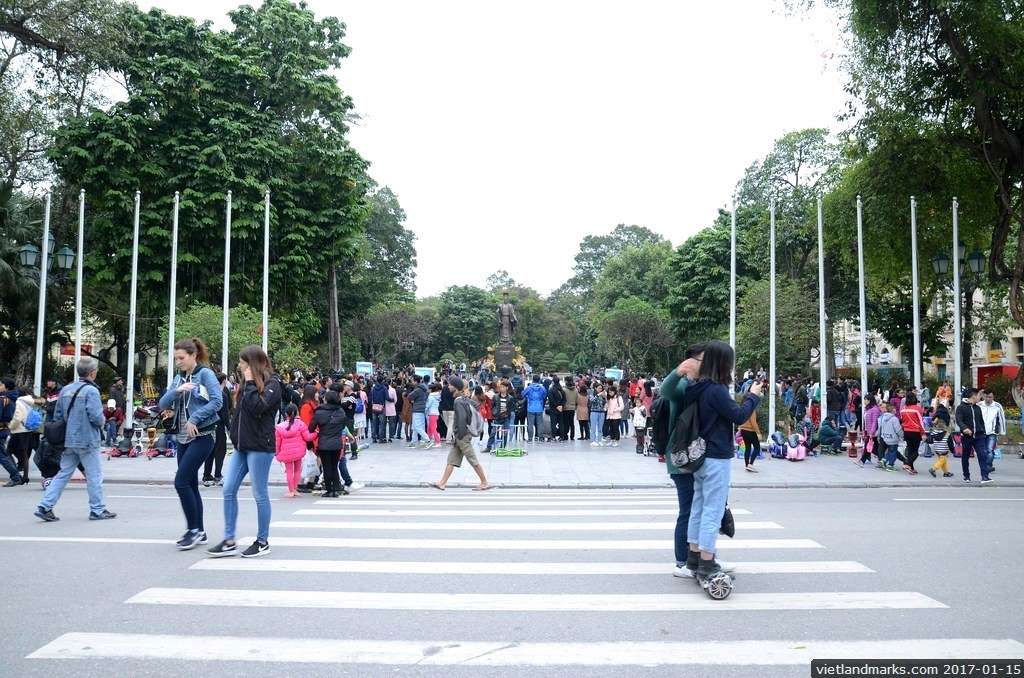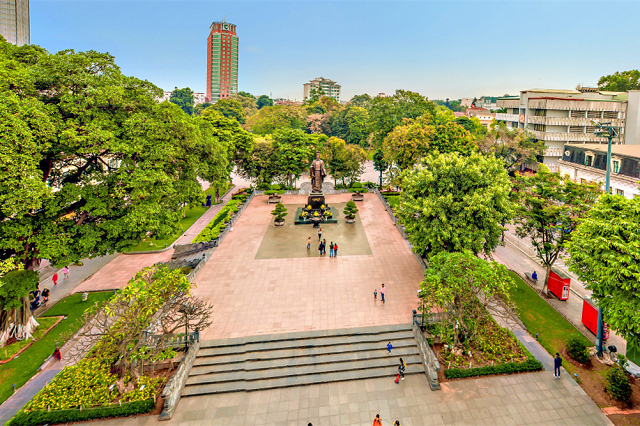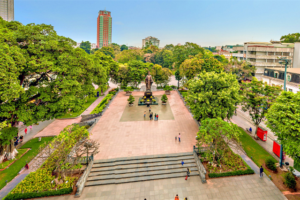Recently updated on October 10th, 2022 at 12:00 pm
Located right near Hoan Kiem Lake – the heart of Hanoi’s capital, Ly Thai To garden is the most famous flower garden in Vietnam. Around the history of this flower garden, there are many stories that not everyone knows.
History and the names of the Ly Thai To garden
Accordingly, Ly Thai To flower garden was originally part of an ancient pagoda – Pho Giac pagoda; ie the Chinese pagoda of Hau Lau village.
In 1883, the French colonialists moved this pagoda to the medical hospital garden, now on Ngo Si Lien street; to take the place to build the Doc Ly building, Treasury, Post office, and a flower garden.
In 1886, after the death of Archbishop Paul Bert, the colonial government named him the flower garden. Paul Bert Flower Garden, or Pon Be; according to Vietnamese transcription; is the first name of Ly Thai To flower garden. By 1890, the French cast the statue of Paul Bert placed on a stone pedestal, facing Sword Lake.

King Lý Thái Tổ Monument
In 1945, after the Japanese coup d’état, Mayor Tran Van Lai took down the statue of Paul Bert. Mr. Tran Van Lai advocated changing the names of streets and flower gardens from French names to Vietnamese names; so Paul Bert flower garden changed its name to Chi Linh flower garden.
Chi Linh is the name of a mountainous region in the west of Thanh Hoa; a base of the Le Loi insurgent army (early 15th century). This is because the park near Sword Lake relates to the legend of King Le Thai To (Le Loi) returning the sword to the turtle god Kim Quy, and on the opposite bank of the lake is a statue of King Le.
In 1984, to tighten the friendship between Vietnam and India, Hanoi again renamed the Chi Linh flower garden Indira Gandhi flower garden. Ms. Indira Gandhi (1917-1984) was Prime Minister of India from 1966 – 1977 and 1980 – 1984.
20 years later; on the occasion of the 50th anniversary of the liberation of the capital (10/10/1954 – 10/10/2004) and to welcome the 1000th anniversary of Thang Long – Hanoi; Hanoi city decided to build a statue of King Ly Thai To in this historic flower garden.
In Vietnamese history, King Ly Thai To (974 – 1028) is one of the greatest kings; was the founder of Thang Long and created a land of thousands of years of civilization. In 1010, he changed the capital of Dai Co Viet from Hoa Lu to Dai La (Thang Long – Hanoi later).
Since the statue of King Ly Thai To was erected, the people of Hanoi have called the flower garden around the monument Ly Thai To flower garden, and this appellation has been considered an official name.
Where is the Ly Thai To garden?
Ly Thai To garden is located at Dinh Tien Hoang Street, Trang Tien Ward, Hoan Kiem District, Hanoi, Vietnam.
Today, Ly Thai To flower garden is a familiar gathering place for the people of the capital as well as domestic and foreign tourists.

Coming to this flower garden, visitors will be immersed in the generous space of a large square facing the lake, surrounded by green plants …
… Or watch the colorful daily activities of all ages and people of the capital.


